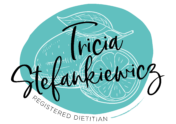Health Tip Tuesday: What you need to know about portion sizes
Back in the 1990’ and early 2000’s the food guide pyramid was replaced with the USDA My plate model.
My plate provides a visual guidance of how to eat to get the most nutrition for your body.
My Plate visualizes your plate as looking something like this:
• ¼ protein
• ¼ starch
• ½ veggie or salad
What does a portion size look like?
PROTEIN
• Chicken and fish: 3-4 ounces, 4 ounces uncooked – 3 ounces cooked
o Hamburger: ¼ pounder can be 4 ounces
o Most burgers found in restaurants are much bigger
• Beans: ½ cup
• Nut Butter: 2 Tbsp
DAIRY
• Yogurt: 6 ounces (typical Greek yogurt size)
• Cheese: 1 ounce/1 slice
GRAINS/CARBOHYDRATES
• Cereal – ¾ bowl, some cereal that is nutrient dense is less
• Bread – 1 slice
• Rice: ½ cup
• Quinoa: ½ cup
• Pasta: 2 ounces, 1 cup cooked
• Oatmeal: ½ cup
• Bulgur: ½ cup
VEGETABLES
• 1 cup of spinach or leafy greens
• ½ cup carrots
• 1 small pepper
FRUIT
• Small – apple, pear, peach, banana, orange
• ¼ cup dried fruit
FATS– size of a thumb = 1 Tbsp
• Olive oil – 1 Tbsp
• Nuts: ¼ cup
Quick Tips:
The overall amount of how many portions you require each day depends on how many calories your body requires based on factors such as: height, weight, age, and activity level
• Use smaller plates and bowls with higher calorie food items or foods that you know you tend to overeat
• Consider pre-packaged or single serving snacks which help minimize the mindless eating
• Pre-plate any snacks or foods so that you are more aware of what you are eating and to avoid the guilt associated with eating when you are not hungry
• When eating out, avoid any SUPER SIZED foods or beverages
